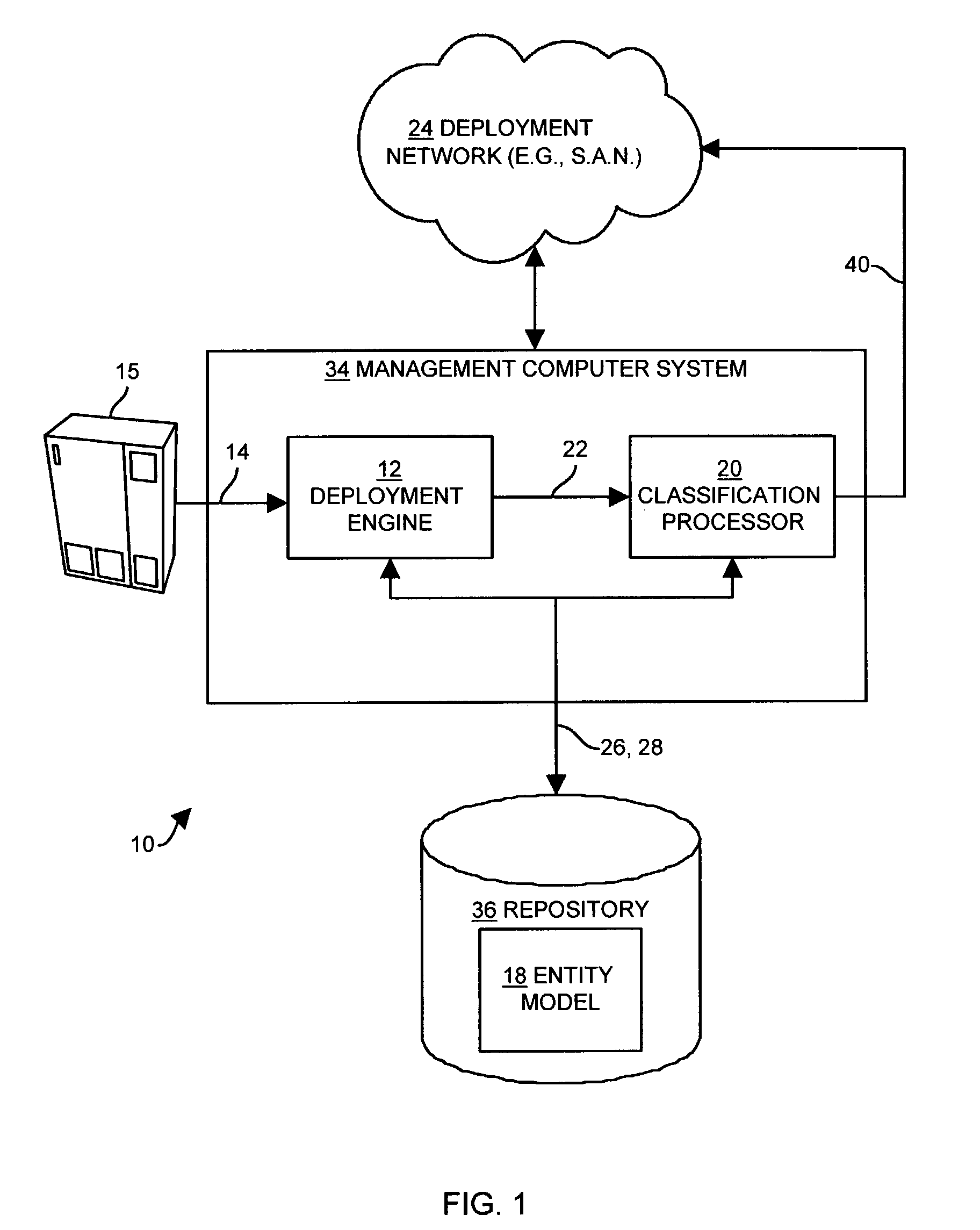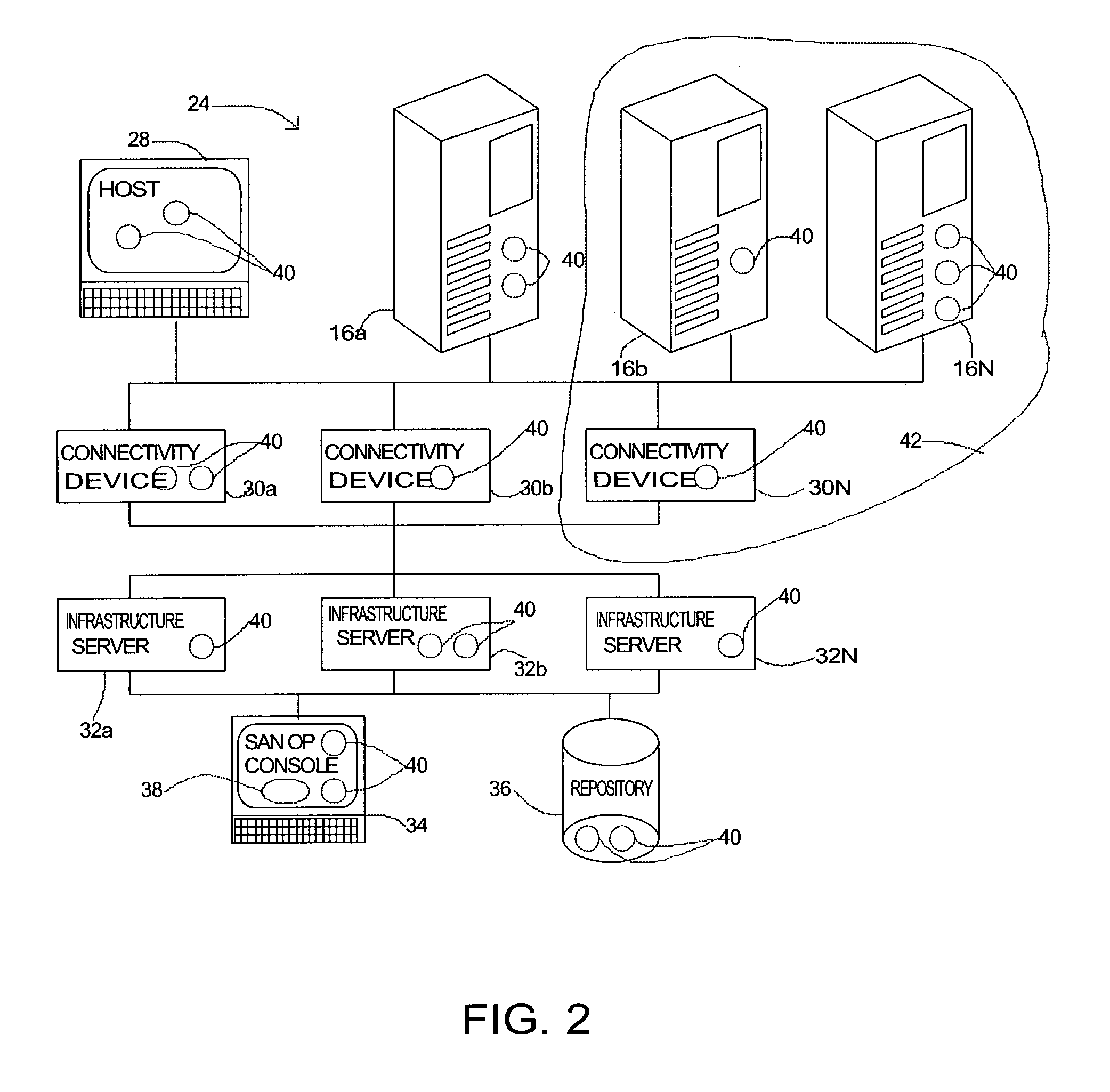Methods and apparatus providing an extensible manageable entity model for a network
a network and entity model technology, applied in the field of methods and apparatus providing an extensible manageable entity model for a network, can solve the problems of inability to manage the new storage array using the current configuration, the failure of the storage area network, and the inability to deploy management capabilities. , high cumbersome and prone to errors, the effect of reducing the development time of network management capabilities
- Summary
- Abstract
- Description
- Claims
- Application Information
AI Technical Summary
Benefits of technology
Problems solved by technology
Method used
Image
Examples
Embodiment Construction
[0041]Embodiments of the invention provide an extensible and hierarchical object model for modeling and storing information related to manageable resources such as host devices, connectivity devices, storage devices and software entities (e.g., database programs, logical volume managers, operating systems or the like) within a storage area network. Using this extensible and hierarchical object model as will be explained in more detail, embodiments of the invention provide highly automated techniques and mechanisms for integrating new or different or upgraded manageable entities within a storage area network environment thus allowing more rapid deployment of management capabilities for such entities without the need extensive manual recreation of complete new sets of data structures and element definitions to represent the new entity, as is done using the aforementioned conventional techniques for providing management of storage area network entities.
[0042]Generally, embodiments of t...
PUM
 Login to View More
Login to View More Abstract
Description
Claims
Application Information
 Login to View More
Login to View More - R&D
- Intellectual Property
- Life Sciences
- Materials
- Tech Scout
- Unparalleled Data Quality
- Higher Quality Content
- 60% Fewer Hallucinations
Browse by: Latest US Patents, China's latest patents, Technical Efficacy Thesaurus, Application Domain, Technology Topic, Popular Technical Reports.
© 2025 PatSnap. All rights reserved.Legal|Privacy policy|Modern Slavery Act Transparency Statement|Sitemap|About US| Contact US: help@patsnap.com



